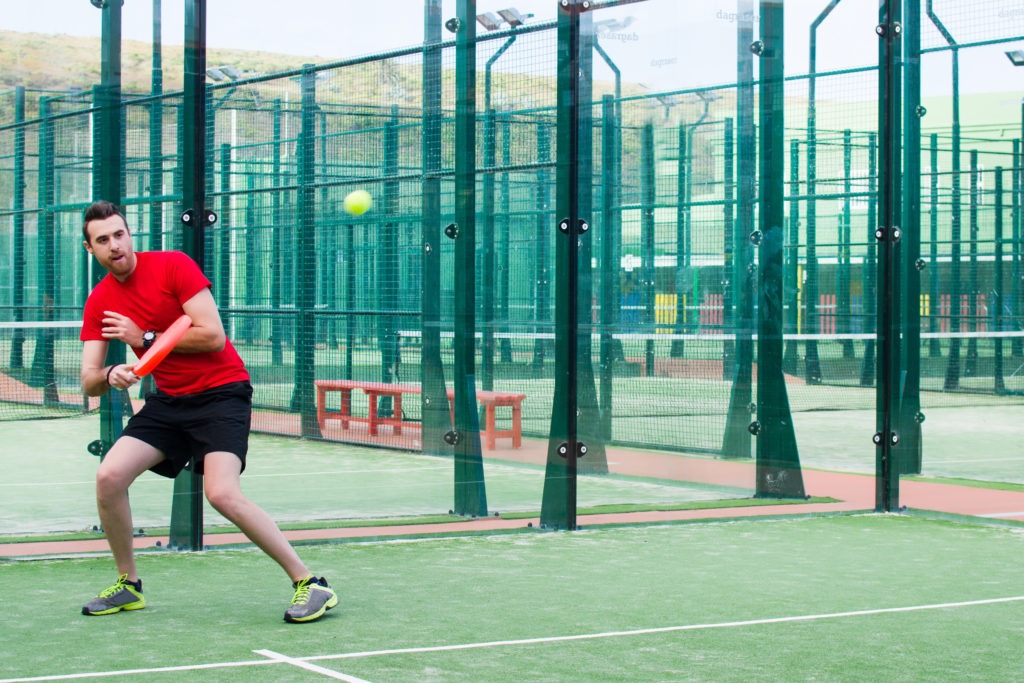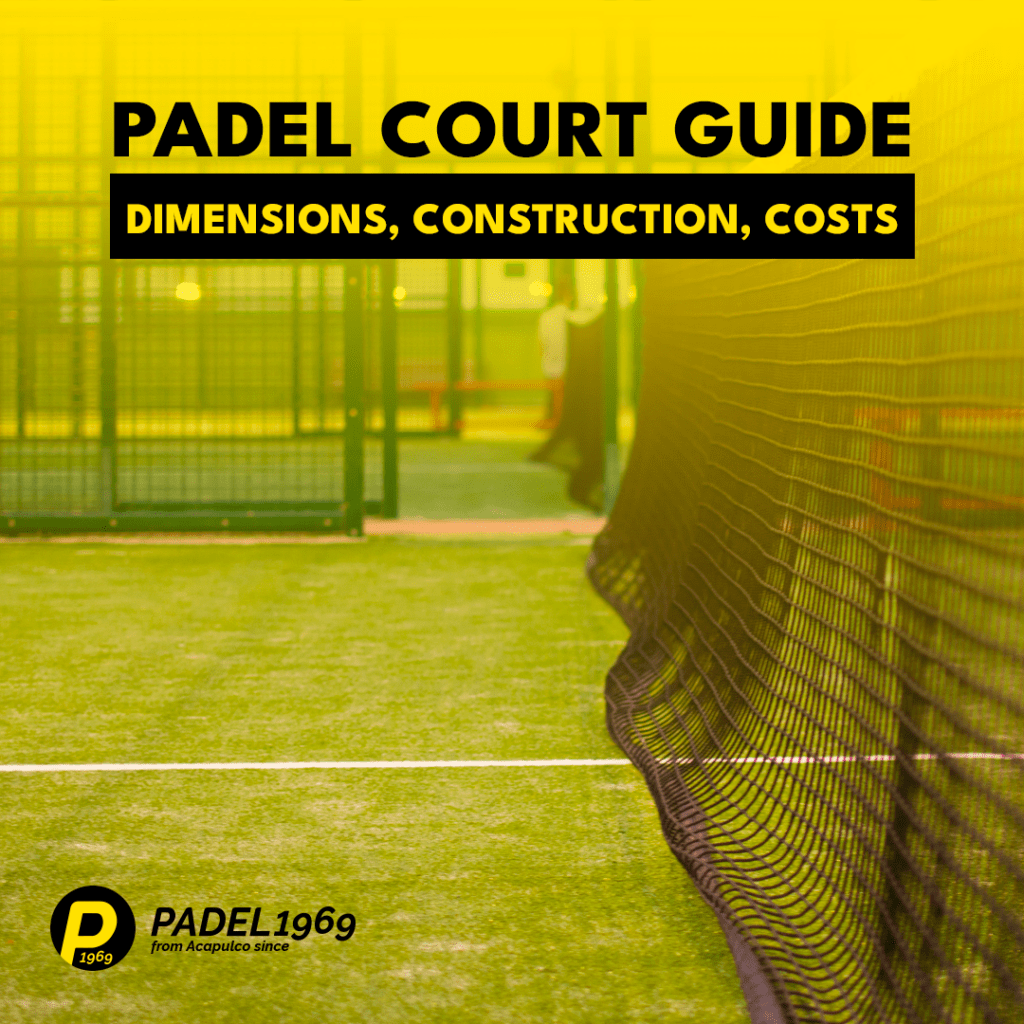Whether you’re looking to up your game by practicing at home, or create your own padel club to share your love of the sport, building high quality courts is a must. Both privately owned and publicly accessible courts should meet certain requirements, but also be of a particular standard to facilitate enjoyable and competitive play.
To the untrained eye, padel courts are quite similar to those used for playing tennis. However, there are several key differences to note.
In this article, we’ll guide you through the essential factors to keep in mind when building a court, such as the padel court dimensions, features, aspects of construction, and costs.
What Is a Padel Court?
A padel court is the playing ground for the sport of padel. Much like tennis, padel courts are rectangular and have a net in the middle. However, courts made for padel are surrounded by walls — often made of tempered glass and metal — and they are a fourth to a third smaller than a tennis court.
You can go through all the important aspects of padel courts in detail below, which you can then apply when building your own.
Padel Court Dimensions
A padel court measures 10 m in width and 20 m in length. It should have a clearance of at least 0.5 m on each side, making its total minimum dimensions 11 x 21 m, or 231 m2.
In terms of height, indoors courts or those covered with a shelter should have a ceiling height at least 6 m tall. However, heights of at least 8 m are more desirable, allowing for advanced game play and heightened lobs. The walls that surround each individual court are 4 m at their highest point — 3 m from the floor, with a 1 m metal fence on the top, which is not meant for rebounds. The walls can be stepped down in meter increments to a height of 2 m towards the center of the court.
The length of this court is divided into half by a net. There are service lines present at 6.95 m from the net, that run parallel to it. The net itself should be 10 m long, at a maximum height of 92 cm on the sides and 88 cm in the center.
It is also important to avoid obstructions on and around the court to ensure a smooth game.
These dimensions are set and recommended by the International Padel Federation, and must be upheld should you want to make your courts available to the public — particularly for competitions.
Features
When building a padel court, the following features are essential:
- Walls and framework: Padel courts are surrounded by walls that are usually made of tempered or toughened glass that is typically 10-12 mm thick. However, any material that doesn’t affect the way a padel ball bounces works as well. Above the glass, and toward the center of the court, steel or aluminium mesh fencing complete the surroundings.
- Net: The net is present exactly at the half-line on the court and is hung tightly on both sides, in a way that it touches the base of the court.
- Floor: The floor, typically a concrete foundation, should be at an equal level and not contain any divots or holes.
- Ground cover: The ground covering must be a porous and synthetic material that is designed to sustain heavy wear and tear. Typically some type of artificial turf is used — be it fibrillated or monofilament artificial grass, or textured artificial grass as used in the World Padel Tour. Silica sand is added to the turf to reduce friction and help with the player’s movement.
- Lines: All the lines must be done accurately and be clearly visible on the court.
- Lighting: For indoor courts or nighttime playing, there should be sufficient lighting.

Padel Court Construction
Like any good construction, padel courts are built from the ground up. Having solid foundations on which to build your court is a must.
It is equally important to find the right company. Be sure to hire reliable professionals who will stick to budget, deliver the court as detailed within their plans, and build it according to official requirements set by the IPF.
Once you’ve decided on which company to work with, all that’s left for you to do is make the decisions regarding configurations, materials and colors. Ultimately, these come down to personal preference and your budget.
Indoor vs. Outdoor Courts
The first key decision when building a padel court is determining whether the court will be indoors or out. Both have their advantages and disadvantages, and can save you money in some ways, while being more expensive in others.
Since they aren’t exposed to the weather, indoor courts tend to require less maintenance. Not being outdoors provides the additional benefits of using some cheaper materials — such as thinner glass, as heat retention is not an issue — and attracting players year round, regardless of the weather. However, indoor courts can require a more expensive upfront cost when building and kitting out an entire facility.
On the other hand, outdoor courts can be more basic in their features, yet they typically require more sand to be filled and raked into the artificial turf on a more regular basis. While the initial outlay may not be as much, the costs involved in maintaining the court could be higher.
Other Considerations When Building a Padel Court
In addition to whether you want an indoor or outdoor court, building a padel tennis court involves many considerations. Depending on the kind of court and your intended use, you might also want to consider the following:
- The lighting and acoustics should be beneficial to the players, as well as the audiences, without being overbearing.
- Building seating around the court for spectators can also add to the value of the court.
- If you’re building a club, providing other services like change rooms, a gym, lockers and food stands can help attract more people.
- Keep aspects such as usage, pricing, occupants, regulations and maintenance in mind.
- If you’re not using glass, determine suitably neutral colors for the walls so that they do not cause interruptions in the sport. Grey is usually a good choice since it does not alter the players’ depth perception.
Padel Court Costs
Building a court isn’t cheap. There are many expenses involved in installing, owning, and maintaining a padel court. Even the cost of construction itself isn’t straight forward, because there are many factors that will impact the price.
While we’ve seen entry-level installations advertised from €25,000 ($27,500 USD), there’s no way to give an exact figure on how much a court is going to cost. The price of a Padel court is normally depending on how many you are planning to acquire and install.
However, some of the factors that will impact the cost of building a padel court include:
- Location: The price of labor in the city in which you want to build, and the availability of both companies who specialize in building padel courts and the materials needed will all impact your budget.
- Preexisting infrastructure: Groundworks can be a huge cost, depending on the type of ground and whether any unforeseen issues arise. A pre-laid slab will typically cut costs.
- Indoor vs outdoor: Indoor courts require high ceilings and good lighting, but usually require less maintenance.
- Building materials: Some building materials might more than others, such as thicker glass and higher-quality textured artificial turf.
- Permits: Different locations have different regulations. Make sure you have a permit in place so that you can go about the process of owning and operating the court.
- Maintenance: Building a court isn’t a one and done affair. Maintaining the court is also important to ensure its quality and durability. The weather means that indoor courts are usually less expensive to maintain than outdoor ones, however other factors such as surface materials, and frequency and level of usage will also impact how often it needs to be maintained.
Start Playing!
Through this guide, we’ve taken you through everything you need to know about a padel court, including its dimensions, features, costs, and construction, as well as things to consider when building a court. All that’s left is to start building, or find a court and start playing!
Are you trying to find the best courts to play on in your area? Are you building your own?
Let us know more about your project contact us at [email protected]. We are happy to make you an individual offer.



3 Comments
Very nice write-up. I definitely appreciate this site. Thanks!
I’m very happy to read this. This is the type of manual that needs to be given and not the accidental misinformation that is at the other blogs. Appreciate your sharing this best doc.
Thank you for the feedback. Good to hear you liked the article.